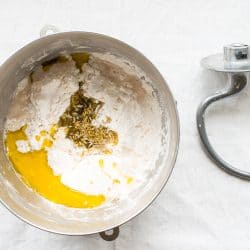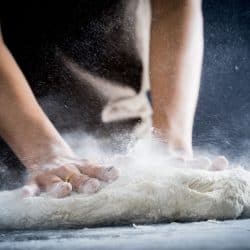Although ordering pizza is quick and convenient, making your own pizza dough from scratch is infinitely more satisfying. Plus, you can usually feed your family for cheaper. If you're interested in making pizza dough, you might not be sure when to stop kneading. So, how long should you knead the dough? We did the research to bring you the answer.
Pizza dough takes roughly 3 to 10 minutes to knead using a dough hook and a stand mixer. In a food processor, you can usually knead the dough in 2 to 5 minutes. If you choose to knead the dough by hand, it will take 4 to 6 minutes.
In this guide, we’ll talk more about kneading pizza dough using appliances like a food processor and a mixer. We’ll even tell you how to know whether your dough has been kneaded too much or too little so you can get it right. Just keep reading!

How Long Should You Knead Pizza Dough?
When you knead any type of dough, including pizza dough, you’re doing it to help the gluten develop.
This is what makes the pizza crust nice and chewy and maintain that airy texture. If you don’t knead your dough properly, it will come out tough and flat.
Per the intro, let’s talk further about how long to knead pizza dough using a stand mixer and a food processor.
In a Mixer
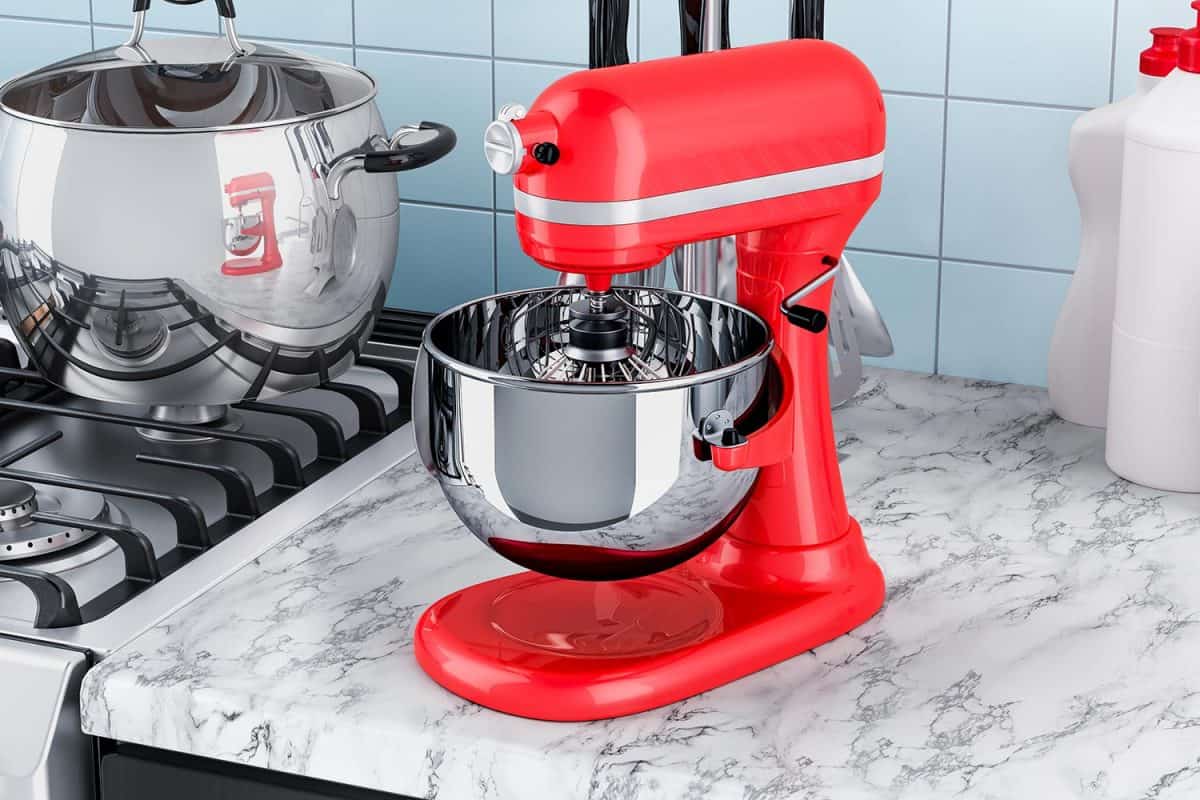
Stand mixers are the common appliance that aspiring pizzaiolos will reach for when they want to knead their dough. A mixer is not as instantaneous as a food processor is though, so you will have to be patient.
If your stand mixer includes a dough hook, then you can attach it to the mixer and get your dough kneaded in up to 10 minutes. No dough hook? No problem! Other attachments can do the job too, but it will take longer.
Without a dough hook, it will take between 3 and 12 minutes to fully knead your pizza dough in the mixer.
In a Food Processor
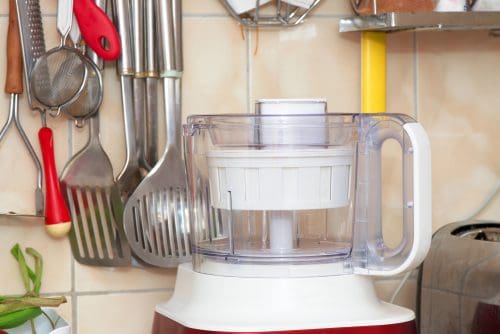
Dough in a food processor? Yes, it’s doable!
We discussed kneading times in this other post here on our blog. Although that post is about any type of dough, such as for baking bread, the same rule applies to kneading pizza dough.
At the very least, a food processor can spread the gluten in your pizza dough in a minute or two. Some food processors will need up to 5 minutes to fully knead the dough.
Even still, that’s not nearly as long as using a mixer, so you’re saving time.
This is beneficial for two reasons. For one, you can move your dough along to the next stage faster, which is proofing. It will take upwards of an hour for the yeast to make the dough rise, so the sooner you can get to proofing, the better.
Second, the less time your appliances are running, the longer you can typically keep them in operational shape.
By Hand

Although it’s the least convenient option, you can indeed knead pizza dough by hand, so we'll talk about it.
The recommended amount of time for hand kneading is 4 to 6 minutes. Although that doesn’t sound like so long, once you’re doing the kneading, you’ll realize how long 4 minutes can be. You’ll have gotten your workout in for the day, that’s for sure!
Does a Dough Hook Knead?
In the section above, we talked about using a dough hook with a mixer when kneading pizza dough. Is a dough hook really the best mixer attachment for kneading? Yes, it is. In fact, that’s precisely what the hook is designed for.
The shape and curvature of a dough hook will allow gluten strands to form so your dough will take shape. The hook gets deep into the dough, kneading it thoroughly and efficiently.
Sure, a dough hook and mixer combo aren’t as fast as using a food processor, but dough hooks do their job exceptionally well. Plus, you’re sparing yourself the upper-body workout that you'll get by kneading the dough by hand.
KitchenAid, a kitchen appliance brand, recommends using a dough hook after you’ve blended your wet and dry ingredients for the pizza dough.
Can You Over Knead Pizza Dough?
If you’re having a busy day in the kitchen, then you could turn on your food processor or mixer to knead your pizza dough and then forget that the appliance is running. It certainly happens.
By the time you come back, your dough has been spinning in the mixer or food processor for 15 or maybe 20 minutes.
You quickly turn off the mixer or food processor and assess the dough. It looks okay enough, so you figure it might be fine to bake it into pizza.
Unfortunately, the dough isn’t useable. You’ve over kneaded it.
Working with the dough will soon prove impossible. The condition of the dough is weak, which will be evidenced if you try to stretch it.
Your dough will tear each time you do. Sure, you can take a larger piece of dough and patch over the hole with some water, but the dough will continually tear.
Further, the dough won’t stay in the shape you want it to no matter how much you struggle with it.
Should you get over kneaded dough in the oven, its texture will come out all wrong. The pizza crust will be crumbly rather than airy and chewy as you wanted. The crust will also be thick, heavy, and dense. Eating it will not be a pleasant experience!
What Happens If You Under Knead Pizza Dough?
After an incident or two where you over knead your pizza dough, you might play it too safe and knead it for only a minute or two. As you now know, pizza dough must be kneaded for far longer than that.
Under kneading dough is likely to cause as much trouble as over kneading it but for different reasons.
Kneading develops gluten strands, and the longer you do it, the stronger those strands are. Since you only mixed your pizza dough for a few minutes, the gluten strands are quite weak.
Like with over kneaded dough, your pizza dough won’t stay in the desired shape. The dough will also tear like paper.
So how do you know if your dough is over kneaded or under kneaded? If the texture of the dough is lumpy, then you haven’t given your dough enough time.
Want to learn how to make pizza dough crispy? Read more: How To Make Pizza Crust Crispy On Bottom
How Can You Tell If Pizza Dough Is Kneaded Enough?
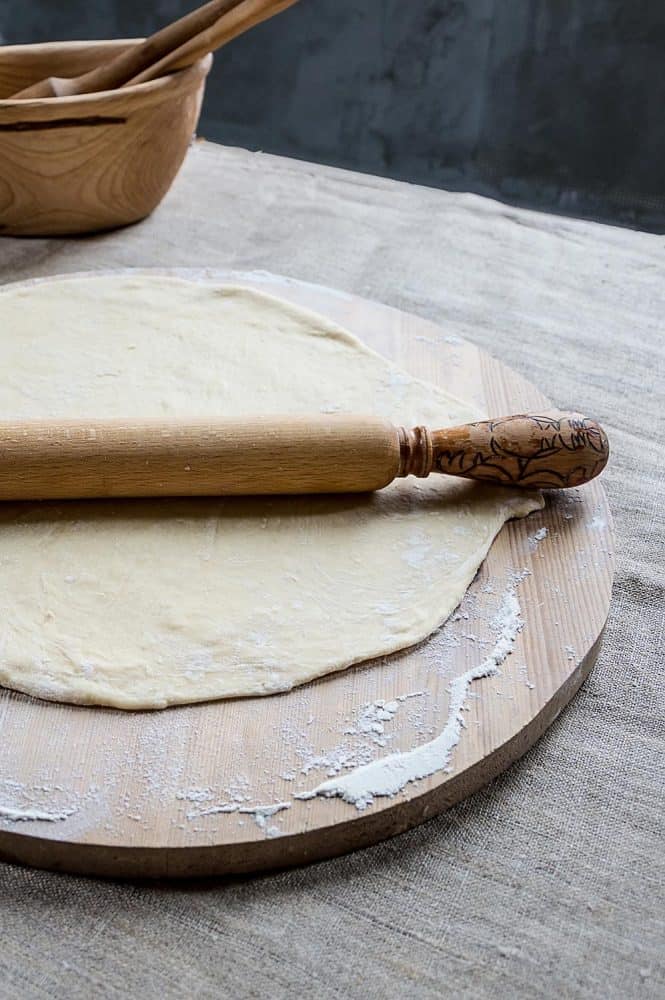
Well-kneaded pizza dough has unique traits that you will not see when you’ve under kneaded or over kneaded the dough. Here are some signs to keep an eye out for.
The Dough Doesn’t Rip When Stretched
When you pull on your pizza dough, it shouldn’t rip. That said, all dough can rip if it’s over stretched, so don’t go out of your way just to test the pliability of your dough. Stick to regular handling, and if the dough doesn’t rip, it’s kneaded enough.
The Dough Stays in the Shape You Put It In
Here’s another handy sign for determining when your pizza dough is well kneaded. If the dough doesn’t shrink upon you stretching it, then you’ve gotten the gluten strands strong enough to maintain their shape.
The Dough Doesn’t Feel Sticky
Your pizza dough will start out sticky when you initially knead it, which is why you’ll need plenty of flour. Yet the longer you knead the dough, the less sticky it should become along the way.
The Dough Is Smooth
No clumps or lumps here! Well-kneaded pizza dough is one that’s completely smooth from the top, bottom, and sides.
The Dough Doesn’t Fail the Windowpane Test
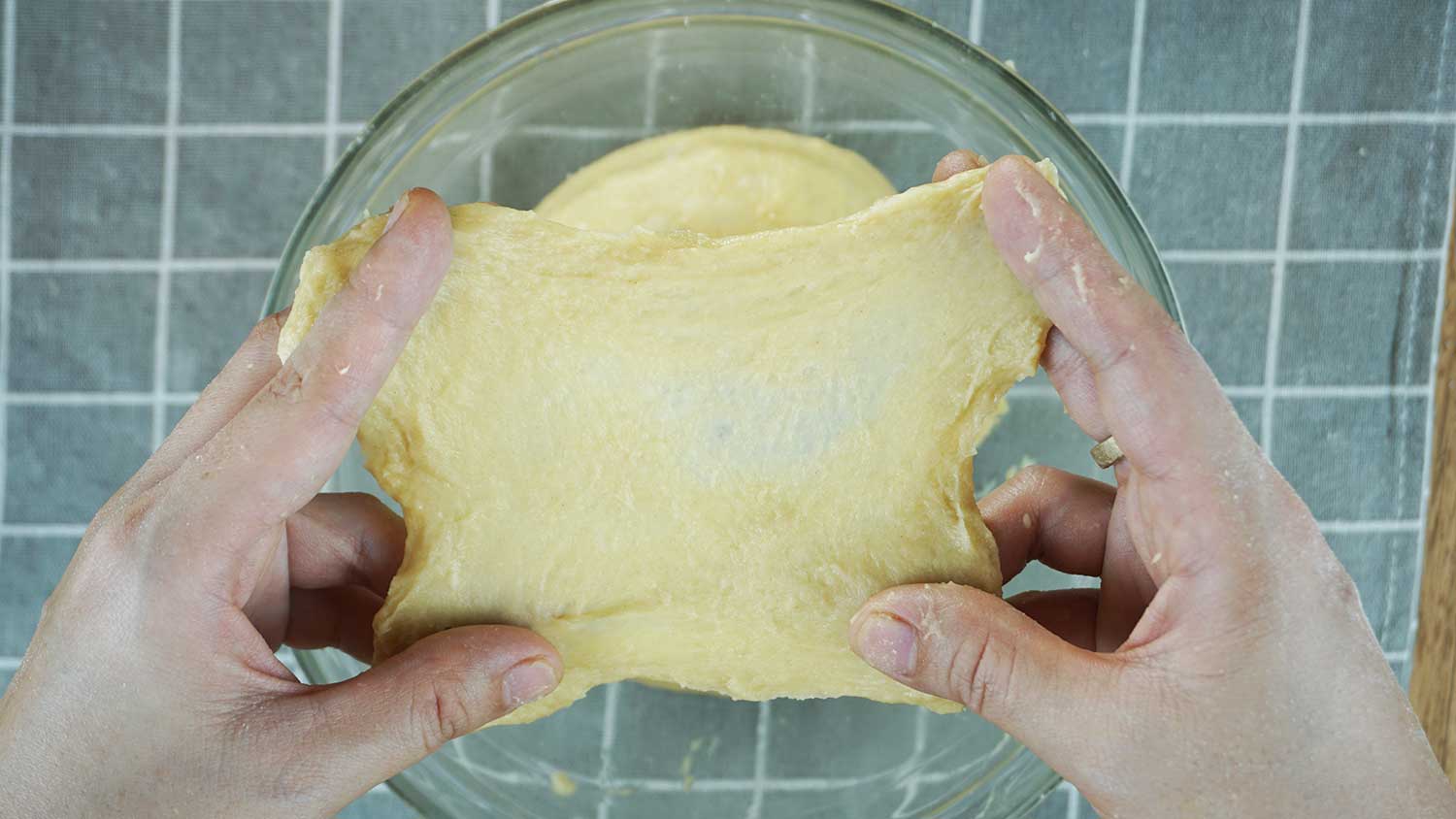
What is the windowpane test, you ask? It’s a way of testing the doneness of your pizza dough.
If you hold the dough up to any window in daylight and stretch it very thin without it ripping, you should be able to see through the dough.
If you can’t see through it, then knead it some more.
In Closing
Learning how long to knead pizza dough is a fine art. If you under knead, the gluten strands can’t develop enough, and your pizza dough will be in bad shape. Yet if you over knead, the dough will also be prone to ripping.
You can knead your dough by hand, using a food processor, or a stand mixer with a dough hook. When your dough keeps its shape, feels smooth and not sticky, and doesn’t tear when you stretch it, it’s ready for the oven!

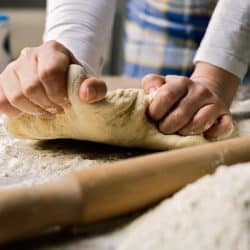

![Baker man hands breadmaking kneading bread dough, How Long To Knead Bread [By Hand And In A Mixer]](https://kitchenseer.com/wp-content/uploads/2021/03/Baker-man-hands-breadmaking-kneading-bread-dough-250x250.jpg)
